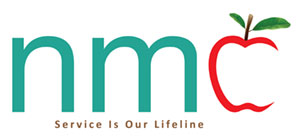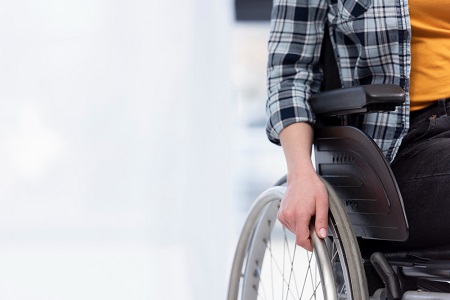Cerebral palsy (CP) is a motor disability. This means that it is a medical condition that affects a person’s ability to move and maintain posture and balance. The word “cerebral” means having to do with the brain and “palsy” means muscle weakness. The disability is caused by either abnormal brain development or by the brain has suffered damage that affects the ability to control muscles. There is at present no cure for CP, but treatment can improve the quality of life of patients. The earlier the condition is diagnosed and treatment starts, the better the outcome.
The symptoms of the disease can vary from patient to patient as does the severity of the condition. A person with mild CP may be able to walk, but it will be difficult and the movement will be awkward. In other cases, a patient may be able to walk with the help of special equipment and in the most severe cases, no mobility may be possible and the patient will need lifelong care. CP is not a progressive disease because it does not normally get worse over time, although the type of symptoms may change.
Understanding the basics of CP will help both patients and caregivers deal with the condition.
It Is Not Hereditary
CP is not a hereditary condition and a person suffering from the condition cannot pass it on to his children. The causes of CP include:
- Bleeding in the brain
- Seizures
- Infections
- Traumatic head injury
- Premature birth
Also Read: Types of Headaches
There Are Different Types of CP
- Spastic CP: This is the most common form of the disorder and it affects about 80% of patients. Patients have increased muscle tone which means that their muscles are stiff resulting in awkward and limited movement. There are 3 sub-categories of spastic CP:
- Spastic Diplegia/Diparesis – Muscle stiffness is confined mainly to the legs and the arms may be less affected or even completely unaffected. The main effect of spastic diplegia is either difficulty in walking or an inability to walk.
- Spastic Hemiplegia/Hemiparesis – In this case, only one side of the patient’s body is affected. The arm is often more affected than the leg. The symptoms can range from mild to severe.
- Spastic Quadriplegia/Quadriparesis – This is the most severe form of CP and it affects the legs, arms, trunk and face. People with this form of CP typically are not able to walk. They often have additional developmental disorders such as reduced intellectual ability, speech, hearing or vision problems and seizures.
- Dyskinetic CP: Patients with this form of CP have difficulty controlling the movement of their feet, legs, arms and hands. Limb movements can be completely uncontrolled or the movement may be slow, unsteady, rapid or jerky. Sitting and walking can be difficult. In some cases, the face and tongue are affected and this can make it difficult to talk and swallow. The muscle tone of these patients can fluctuate from too tight (movement difficulty) to too loose (lack of strength to move) in a matter of days and even in a few hours.
- Ataxic CP: This form of CP causes difficulty in balance and coordination. Patients are unsteady while walking. Any rapid movement or a precise movement like writing is difficult if not impossible. When arms are stretched out to reach or grasp an object, limb control may be lost.
- Mixed CP: This is a condition where a patient suffers from more than one type of CP. The symptoms of two or more forms of the disorder are apparent. The most common combination is spastic-dyskinetic CP.
Early Signs of CP
Because there are several different types of CP, and the severity of the condition may differ, the signs of a person having the condition can vary greatly. The main indicator of the possibility of CP in a young child has delayed motor and movement milestones such as walking, standing, sitting upright, etc. The other common signs of CP include:
- In Babies Below 6 Months:
- When the child is lying on his back and is picked up, the head droops back or to the sides.
- The child’s muscles feel stiff and hard.
- The muscles feel soft and the limbs are loose and floppy.
- When the child is held in an adult’s arms, he or she seems to overextend the neck and/or back and appears to be pushing away from the adult holding him or her.
- When picked up by holding under the arms, the legs become stiff and may cross each other.
- In Babies Above 6 Months:
- Inability to roll onto the side.
- Inability to bring hands together.
- Difficulty in bringing hands up to the face or mouth.
- When reaching for objects, the child can reach with only one hand while the other is clenched tight.
- In Babies Above 10 Months:
- Crawling in a lopsided manner, with one hand and leg dragging behind the other.
- The child moves by sliding on the buttocks or the knees but is unable to crawl on all fours (hands and knees).
Read Also: ஸ்ட்ரோக் – சிகிச்சையும் பாதுகாப்பும்
Treatment
Once a diagnosis of CP is confirmed, a team of health professionals will work with the child and parents to create a developmental plan that will enable the child to reach the full possible potential and maximize the quality of life. Among the most common treatment options are medications, surgery, the use of braces, and physical and speech therapy. There is no set treatment plan – it must be tailored to the specifics of the disability and the needs of the child. Parents need to fully understand the nature and extent of the condition to enable them to give their child the support he/she needs to live a productive life.
CP Does Not Directly Affect Cognitive Ability
CP is a motor disorder which means that it specifically affects a patient’s ability to move. While it is true that about 50% of CP patients have some form of intellectual disability, that condition is not caused by the same brain damage that caused CP. The conditions often co-occur, but they are not directly related and should be treated separately.
If your child has been diagnosed with CP or if you suspect the condition, the child must be examined and evaluated at a leading multispecialty hospital that has an entire range of medical specializations, cutting-edge technology, treatment protocols, and highly qualified specialists to ensure that the child is accurately diagnosed and if cerebral palsy is identified, then the best treatment and support made available to the child and the parents.


